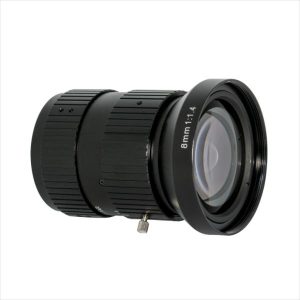Makine Görme Lenslerinin Seçimi ve Sınıflandırılması Yöntemleri
Machine vision lens is a lens designed for use in machine vision systems, endüstriyel kamera lensleri olarak da bilinir. Yapay görme sistemleri genellikle endüstriyel kameralardan oluşur, lensler, ışık kaynakları, ve görüntü işleme yazılımı.
Otomatik olarak toplamak için kullanılırlar, işlem, and analyze images to automatically judge the quality of workpieces or complete precise position measurements without contact. They are often used for High-precision measurement, automated assembly, non-destructive testing, defect detection, robot navigation and many other fields.
1.What should you consider when selecting machine vision lenses?
When selecting machine vision lenses, you need to consider a variety of factors to find the lens that best suits you. The following factors are common considerations:
Field of view (bakış açısı) and working distance (WD). Field of view and working distance determine how large an object you can see and the distance from the lens to the object.
Compatible camera type and sensor size. The lens you choose must match your camera interface, and the image curvature of the lens must be greater than or equal to the diagonal distance of the sensor.
Transmitted beam incident beam. It is necessary to clarify whether your application requires low distortion, Geniş alan derinliği, large depth or large aperture lens configuration.
Object size and resolution capabilities. How large the object you want to detect and how fine the resolution is required need to be clear, which determines how large a field of view and how many pixels a camera you need.
Environmental conditions. If you have special requirements for the environment, such as shockproof, dustproof or waterproof, you need to choose a lens that can meet these requirements.
Cost budget. What kind of cost you can afford will affect the lens brand and model you ultimately choose.

The machine vision lens
2.Classification method of machine vision lenses
There are many factors to consider when selecting lenses. Machine vision lenses can also be divided into different types according to different standards:
According to the type of focal length, it can be divided into: sabit odaklı mercek (focal length is fixed and cannot be adjusted), zoom lens (focal length is adjustable and operation is flexible).
According to the aperture type, it can be divided into: manual aperture lens (the aperture needs to be adjusted manually), automatic aperture lens (the lens can automatically adjust the aperture according to the ambient light).
According to the imaging resolution requirements, it can be divided into: standard resolution lenses (suitable for general imaging needs such as ordinary monitoring and quality inspection), high-resolution lenses (suitable for precision detection, high-speed imaging and other applications with higher resolution requirements).
According to the sensor size, it can be divided into: small sensor format lenses (suitable for small sensors such as 1/4″, 1/3, 1/2″, etc.), medium sensor format lenses (suitable for medium-sized sensors such as 2/3″, 1″, vesaire. sensor), large sensor format lenses (for 35mm full-frame or larger sensors).
According to the imaging mode, it can be divided into: monochrome imaging lens (can only capture black and white images), color imaging lens (can capture color images).
According to special functional requirements, it can be divided into: low-distortion lenses (which can reduce the impact of distortion on image quality and are suitable for application scenarios that require precise measurement), anti-vibration lenses (suitable for industrial environments with large vibrations), vesaire.

